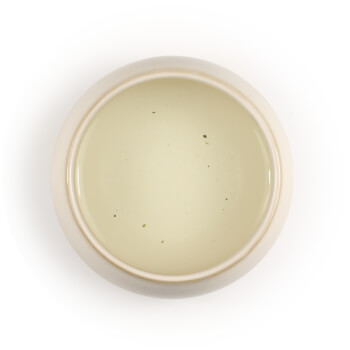95
yu qian anji bai cha
Based on 81 reviews
sample
returning beginning of Dec
NOTIFY ME
1.5oz
returning beginning of Dec
NOTIFY ME
sample
April 2022 harvest
Origin
Zhejiang, China
Farmer
Yu Feng
Elevation
900m
Infusions
7

This year's Yu Qian Bai Cha offers a gentle yet complex cup, silky texture, with notes of delicate almond, macadamia and fresh young pea pod. It remains a beautiful tea for those who want the experience of a green tea without the sharp grassiness found in other styles.
About the leaves:
Grown at 900 meters above sea level the 4 cm long leaves are hand-plucked in mid-April, from 8-year-old trees. Its local name is "Shi Nuren". With "shi" meaning stone, and "nuren" meaning woman. The metaphor is that it is difficult for the stone woman to produce children, as it is difficult for the Anji tea trees to bear seeds.
About the leaves:
Grown at 900 meters above sea level the 4 cm long leaves are hand-plucked in mid-April, from 8-year-old trees. Its local name is "Shi Nuren". With "shi" meaning stone, and "nuren" meaning woman. The metaphor is that it is difficult for the stone woman to produce children, as it is difficult for the Anji tea trees to bear seeds.
This tea contains a low level of caffeine | Steep at 170° for 2-3 minutes.
Customer Reviews (81)
Fresh From Origin
Anji bai cha translates to "Anji White Tea" despite the fact that it is indeed a green tea. Bai Cha or white tea refers to the near-white color of its leaves. Due to its misnomer, it is occasionally referred to as a white tea, but the process used to make it distinguishes it as a green.Anji County in Zhejiang Province is a picturesque mountainous region well known for its 60,000 hectares of bamboo groves. The bamboo grown here tends to have a sweetness, not unlike the Yu Qian Anji Bai Cha.
Anji Bai Cha shares many similarities with Gyokuro. They are both quite high in their amino acid content and L-theanine. However, their appearances differ greatly as Anji Bai Cha is lighter in color. While Gyokuro, which is shade-grown, is rich in chlorophyll, giving it a deep green appearance.
The origins of Yu Qian Anji Bai Cha can be traced back to the emperor in the Song Dynasty, Song Hui Zhong, who was said to have enjoyed this tea so much that he devoted an entire chapter about it in his book.
Free Sample Offer
If you buy this tea from another vendor, we invite you to try a free sample. Simply email a receipt showing an earlier purchase of the "yu qian anji bai cha" tea to masters@adagio.com and we'll mail you a free sample of this tea to compare. We're convinced that you'll be impressed with its quality and value.Yu Feng

How long have you been growing tea and what got your started?
I started to work with tea when I got married in Anji, Zhejiang. My husband is tea farmer. I followed him and starting to work in tea. I have worked with tea for more than 35 years.
Can you describe a typical day out in the field?
I get up at 6 and prepare the breakfast for my family. I go out to the tea garden around 7:30 am and start to pick up the tea leaves. I will work till 3 in the afternoon and go back home to take care of my grandchildren.
What is your favorite part of growing tea?
I love my job because I love drinking teas. Lots of people have retired. But I still want to work. I love the picking, which makes me happy. Besides, I think this is good for my health. The air is fresh, the tea smell is fresh, I am happy with this.
Conversely, what is the hardest part of your job?
Our anji white season is from Qing Ming to Gu Yu. So the tea leaves are very tender. I am older now so I have to work carefully. I hate to hurt the tea buds and leaves when plucking. As a result, I am slower than others which I do not like.
Are there any tips you can give on how to best brew your tea?
Please use a glass to brew this tender tea with temperature at 80 degrees celsius. High temperature will kill the tea. It is better use mineral water or spring water.

